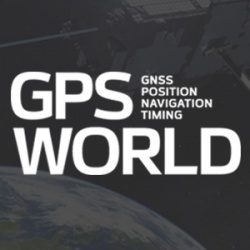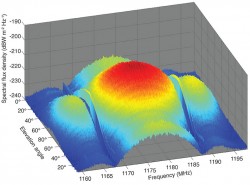
The System: First IIF Satellite Speeds into Orbit
June 1, 2010
At press time, GPS spacecraft IIF-1 was set to be launched May 27 from Cape Canaveral Air […]
Read More

At press time, GPS spacecraft IIF-1 was set to be launched May 27 from Cape Canaveral Air […]

Officials from the Space and Missile Systems Center’s Global Positioning Systems Wing announced today the award of the Next-Generation GPS Control Segment (OCX) contract to Raytheon Company, Intelligence & Information Systems, Aurora, Colorado. The OCX development contract will be 73 months in duration and with option years for sustainment worth $1,535,147,916.

Four Galileo in-orbit validation (IOV) satellites scheduled to launch next year have already missed their first pad date.The […]

A Preliminary Analysis of SVN49’s Demonstration SignalGreat excitement surrounds the activation of a new transmitter from a satellite — an occasion dubbed first light. Research groups around the globe joined the GPS Wing in monitoring and analyzing the first L5 signals from space. We describe the equipment and procedures used to capture and analyze SVN49’s signals and give an assessment of their characteristics.

Brad Parkinson, the first GPS Program Office director, chief architect and advocate for GPS, submitted written testimony to Congress on mitigation options for possible GPS brownouts. His presentation comes in reference to the recent GAO report highlighting the risk that the GPS constellation may fall below the minimum level of 24 satellites required for full operational capability. In his opening, Parkinson states that GAO correctly points out the possibility that the GPS constellation will be reduced to less than the current number of 30 to 32 satellites. In fact, it is possible that the constellation will be at a level of less than 24 satellites. I would like to focus on the options that would help reduce this risk.”

The United States Government Accountability Office (GAO) issued on May 7 an alarming report on the future of GPS, characterizing ongoing modernization efforts as shaky. The agency appears to single out the IIF program as the weak link between current stability and ensured future capability, calling into doubt whether the Air Force will be able to acquire new satellites in time to maintain current GPS service without interruption. It asserts the very real possibility that in 2010, as old satellites begin to fail, the overall GPS constellation will fall below the number of satellites required to provide the level of GPS service that the U.S. government commits to.”

The Lockheed Martin team developing GPS III is progressing on-schedule, achieving key milestones in the Preliminary Design Review (PDR) phase with the U.S. Air Force.
Follow Us